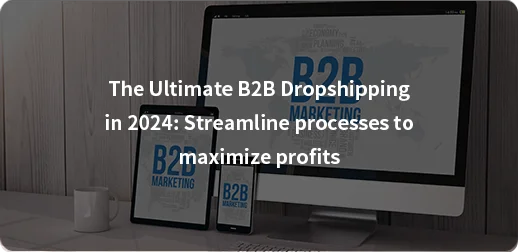In the current landscape of e-commerce, analytics has elevated the entire process of business operations. It plays a pivotal role in offering valuable insights into various business aspects.
These insights can be used to make well-informed, data-driven decisions that actually benefit business operations.
E-commerce analytics can help transform your marketing strategies and even your fulfillment processes.
Simply by extracting relevant data that analyses what really helps make your business more successful.
This article guides you through all aspects of e-commerce analytics, from benefits to the best tools available.
Learn how you can use e-commerce analytics to redefine your business operations and boost your customer satisfaction.
What is ecommerce analytics?

E-commerce analytics involves gathering and analyzing data related to various aspects of an e-commerce business.
It covers almost all areas, including marketing, sales, website engagement, and even fulfillment and logistics.
The importance of e-commerce analytics lies in gathering valuable insights regarding trends, business performance, backend procedures, and how customers are behaving online.
Using this information businesses can make well-informed, data-driven decisions that can have a great impact on their operations.
Benefits of E-commerce Analytics:
E-commerce analytics provides businesses with actionable insights. Below are some benefits of how these insights can help elevate various operations in an e-commerce business.
1-Provide data-driven strategies
E-commerce analytics can provide valuable data regarding marketing, website design, and even inventory stocking.
This data analysis can help businesses form their data-driven strategies.
For example, you can use analytical tools to see which marketing strategy gained you the most profits. Hence, this will allow you to choose the marketing methods that work best for your target demographic.
Such information allows you to make the best decisions that will benefit you in the long run.
2-Better understanding of consumer expectations
E-commerce analytics helps businesses understand their customers better.
For instance, you might wonder if people will purchase your products after speaking with a live chat agent.
This question is answered by e-commerce analytics.
Using the answers, businesses can improve themselves according to their customer’s behaviors, preferences, and requests.
3-Improve marketing and sales
E-commerce analytics can bring you more sales by helping you find the most profitable streams.
It does this by helping you understand how customers find you and capitalizing on the most profitable channels.
Hence, using e-commerce analytics, you can find out which types of marketing work best with your target audience.
This will help you optimize your advertising campaigns for a greater impact.
4-Reduce operation costs
E-commerce analytics helps you figure out your supply chain bottlenecks. This is very useful when it comes to making the entire process more efficient.
For instance, using e-commerce analytics, you can identify which step of the supply chain is costing you the most.
This investigation will help you figure out how to lower the cost. Using such data-driven strategies can help improve fulfillment speed and save you bucks.
Hurdles in E-commerce Analytics
Businesses often overlook e-commerce analytics as it is complex work. The complexity is due to the various ecommerce operations.
This means that there is a lot to keep track of across departments and processes.
Gathering and analyzing data from third-party vendors is also a problematic task. Switching between multiple platforms for metrics and analytics can be difficult, too.
If only there were a single platform that could monitor all aspects of an e-commerce business’s operations, the job would have been a piece of cake.
However, this is not the case. So, many e-commerce businesses limit their analytics.
They only extract data involving a few aspects of their business processes. This data isn’t helpful in providing them with actionable insights.
To overcome this hurdle of data collection and analysis in e-commerce, a self-service reporting tool is needed.
These tools help generate reports on key performance indicators.
Hence, all information regarding website traffic, conversion rates, average order value, and customer retention can easily be extracted.
Best e-commerce metrics to analyze
We have gathered the most important metrics that must be tracked while carrying out an e-commerce analytical report.
•Metrics for the website and engagement

It is important to see how well your website is performing. Is your website user-friendly?
This analysis will help you highlight faults with your web design, allowing you to improve it. By doing so, you might gain a greater engagement on your website.
Below are things you need to consider for this:
|
Variables |
Features |
|
1-Conversion Rate |
This measures the percentage of visitors who perform a targeted action. For instance purchasing or subscribing. |
|
2-Cart Abandonment Rate |
This measures how many visitors add products to the shopping cart but fail to make a purchase. |
3-Site traffic |
This measures the total number of visitors to your website. |
4-bounce rate |
This measures the amount of visitors that leave the website without performing any targeted action. |
5-Scroll depth |
This measures how much customers scroll down on each page of your website. |
|
6-Exit rate |
This measures the percentage of visitors who exit from your website. |
7-Site of departure |
It helps you look at where the visitors left your website from. |
Consider a scenario:
The analysis tells you that your potential customers tend to exit your website when they have to scroll down more.
Hence, you can add more pages to the website to shorten the scroll depth. By doing so, the exit rate tends to decrease. This proves that your e-commerce analysis was worth it.
•Metrics for marketing and sales
To improve your marketing tactics, it is vital to analyze the performance of your current marketing and sales.
Below are some key variables to consider while assessing your marketing:
Variables |
Features |
|
1-Source of traffic |
This tells you about the channels and platforms from where you are receiving your traffic. |
|
2-Demographics |
This gives you information about visitors’ genders and ages. |
|
3-Location |
This lets you know where your visitors are located geographically. |
|
4-Return on advertising expenditure |
This allows you to gain insights into how much revenue is gained for every dollar spent on advertising. |
|
5-Dollars per visitor |
This measures how much revenue is produced by every visit to your website on average. |
|
6-Revenue generated per order |
This measures the average revenue generated per order placed on your website. |
|
7-Cost per acquisition |
This measures the amount of money spent to persuade a customer to take a specific action. |
|
8-Average order value |
This measures the amount of average dollar spent by each consumer while placing an order on your website. |
|
9-Ad impressions and reach |
This measures the total number of ad viewers, along with how many times they saw it. |
|
10-Email click-through rate |
This measures the percentage of recipients who used the link in the email. |
Consider a scenario:
Your business has spent $1 per customer on marketing. Using these variables, you analyse that the money you spend is more than the profits it is bringing.
For every $1 spent per customer on marketing brings only $0.5 profit to your business. This means that your marketing strategies are failing.
These analyses help you improve your marketing and sales strategies without wasting your money.
•Metrics for inventory and fulfillment

To streamline your business, it is important to have efficient warehouse and fulfillment operations.
The below variables can help you identify inefficiencies in the process and make modifications accordingly.
|
Variable |
Features |
|
1-SKU Efficiency |
This is the number of units sold for each SKU over a specific time period. It helps you gain a comparison of the preceding period |
|
2-Average shipping time |
This is the average time taken by shipping carriers to deliver your products to your customers. |
3-Typical fulfillment time |
This is the average time taken to deliver orders placed through the website. |
|
4-Average unit storage cost |
The measures are the average amount of money taken to store each unit in your inventory. |
|
5-Average order fulfillment cost |
This is the measure of the average cost taken to fulfill each order. This variable takes into consideration many factors, including the costs of receiving and storing goods, processing orders, and picking, packing, and delivering them |
|
6-Average shipping price |
This measures the amount of money taken to ship and deliver your orders to your customers |
|
7-Rate of inventory turnover |
This measures the amount of times the inventory is sold and restocked in a specific time period. |
|
8-Order precision |
This lets you know the percentage of orders that were successfully delivered without any mistakes. |
|
9-Completion on time |
This measures the percentage of orders completed within the given deadline. |
Consider a scenario
Let’s suppose you want to analyse how well your inventory performed during a time frame of one month. The e-commerce analysis showed you that 250 orders were completed per week.
This gives you an accurate analysis of your store’s ability to meet customer expectations and ensure timely delivery.
You can also manage your inventory according to your expected orders, eradicating the risk of excess inventory.
•Extra business metrics
There are a few other metrics that can help businesses gain a better understanding of how their operations are performing.
Below, we have mentioned a few of these:
|
Metrics |
Features |
|
1-Revenue and profit |
This helps you gain information regarding the total income made from selling your products along with the profits. |
|
2-Client Value |
This metric evaluates the average profit that can be made from a customer over time. |
|
3-Turnover rate |
This tells you about the number of potential customers lost over a given time period. |
|
4-Percentage of retention |
This measures the percentage of customers that remained loyal to your company in a given time period |
|
5-Refund and return percentage |
This measures the percentage of orders for refund that were offered along with the percentage of returned orders. |
|
6-Net Promoter Score |
This gives you insights into the possibility of customers spreading a good word about your business. |
10 best ecommerce analytics tools
It can be difficult to analyze all these metrics without the aid of any efficient tools.
Hence, we have made a list of the best analytics tools. They can automatically collect and evaluate data to provide you with the necessary information.
1-Google Analytic

Google Analytics is a free tool that helps you analyze your website’s success. It can be used to gain a detailed overview of how well your website is performing.
Using this tool, you can track your site traffic along with its source, demographics, and geo-location. It also helps you analyze conversion and abandonment rates along with refunds.
Enhanced Ecommerce version:
This version of Google Analytics offers enhanced business operation insights. This helps you to gain a better understanding of your customer experience.
Using this information, you can elevate your customer service.
2-Hotjar
This monitoring tool helps you evaluate human interaction on your e-commerce website. It gives you an idea of where the most attention is being given.
3-Woopra
Woopra allows you to analyze how your product and marketing campaigns are influencing customer behavior.
It gives you valuable insights into where potential customers exit your webpage, along with how many turn into customers.
4-Matomo
Matomo works similar to Google Analytics. It helps you gain detailed insights into your e-commerce business operation.
You can use its conversion optimization features such as heatmaps, A/B testing, and form analytics.
On top of this, it helps you review user actions on your site, providing you with a better understanding of your visitors.
5-Analytics by Rulers
This is an entire analytical system that interfaces with your website, CRM, and other marketing programs. It can help you gain precise sales and income insights.
This lets you know of various successful marketing channels based on income and leads generated.
6-Crealytics
Crealytics CLV Platform helps you see the worth of your customers. It drives its results by analyzing customer lifetime value, order margins, and retention costs.
You can use this to know if your advertisement is actually worth the amount spent on it.
7-REVEAL
REVEAL is a complete e-commerce analytics tool. It helps you track data, including profitability, number of customers, and average order per customer.
This valuable data can help you gain customer-related performance insights.
8-MailTag
MailTag is an email solution. It works by delivering insights regarding how well your emails are performing.
You can check information like average open rate and link click rate. This data can help you see the effectiveness of your email marketing.
9-BeProfit
If you want to measure how much revenue you have made, then BeProfit is the best tool for you.
It takes its data from your spending, marketing, and other platform-specific conversions. The precise profit analysis provided by it can help you find out your most successful products.
10-ReturnLogic
To gain SKU-level insight, you should try to return logic. It delivers data about your returns, helping you understand your return rates and revenue loss.
With this analysis, you can find out issues with your products or processes. You can also spot what generates the most revenue.
If you are still having difficulty choosing a good analytical tool, Globallyfulfill is here to help you out. This fulfillment service provider offers you everything required to run an e-commerce business efficiently.
They will assist you in gaining detailed insights into your inventory, fulfillment, and logistics performance.
This means that they will take care of all your e-commerce needs, from replenishing your inventory to fulfilling orders on time and even reducing the total expenditure to fulfill each order.
Using their services, you can easily figure out how to distribute your inventory efficiently and effectively.
Conclusion
In conclusion, the world of e-commerce is constantly evolving. Hence, it has become a necessity to utilize analytics for business operations.
With the help of data collected on the basis of customer preferences, supply chains, and other variables, e-commerce analytics allows businesses to develop well-informed strategies.
This acts like a guiding compass towards success. There are a plethora of top-notch tools and services available for e-commerce analytics.

















Hi, i think that i saw you visited my web site thus i came to ?eturn the favor·I’m attempting to find things to enhance my site!I suppose its ok to use a few of your ideas!!